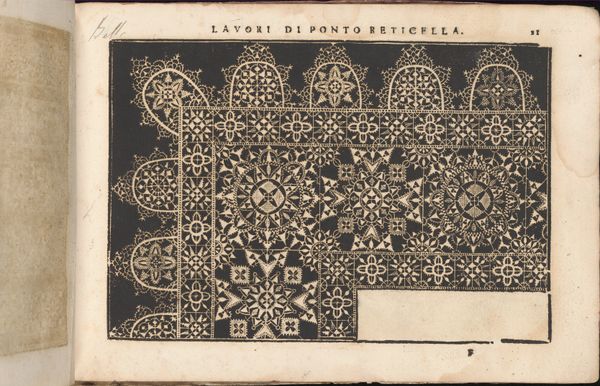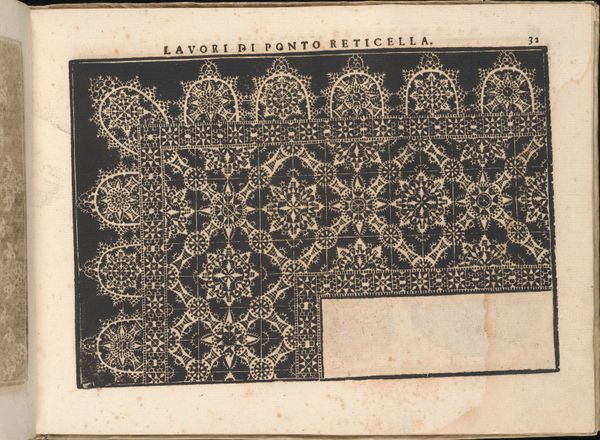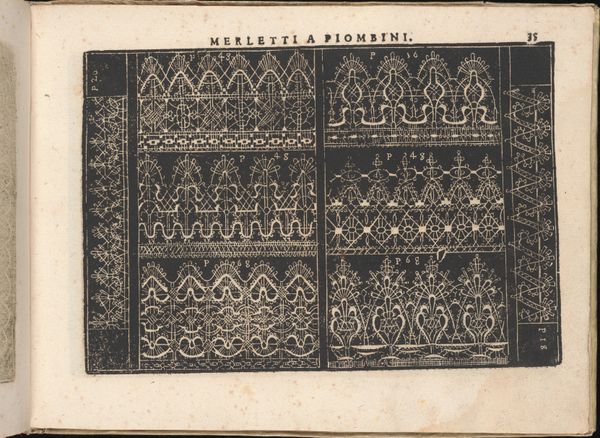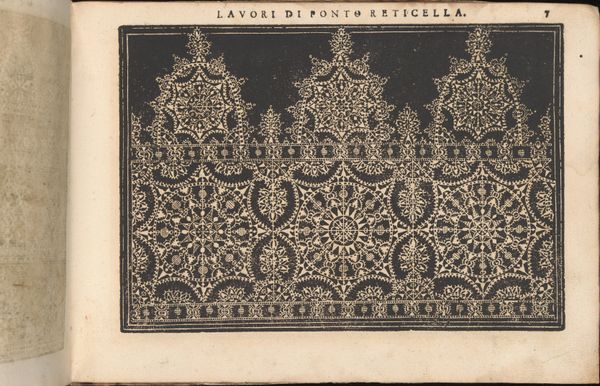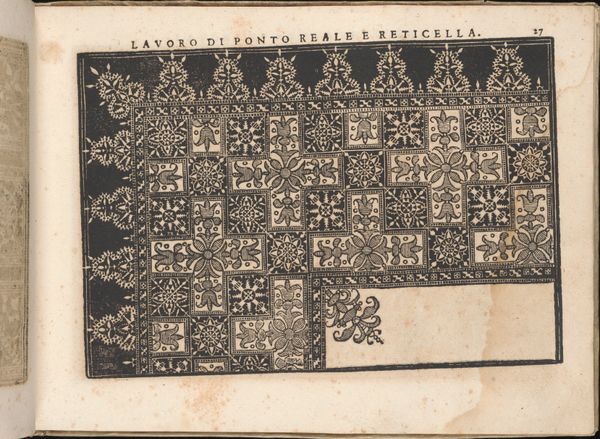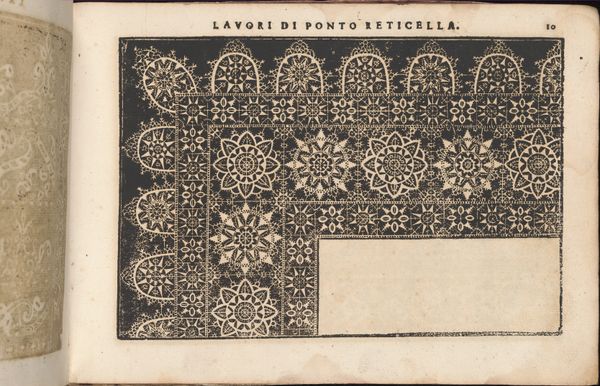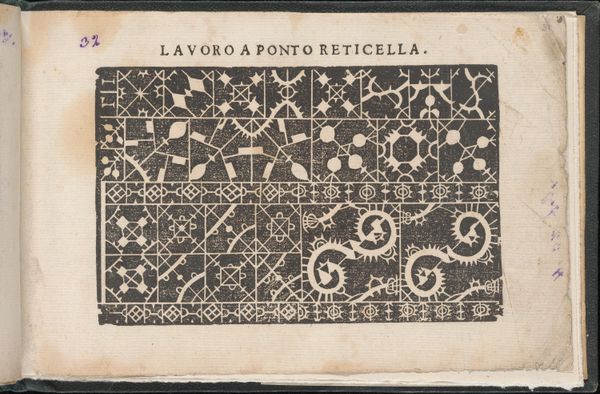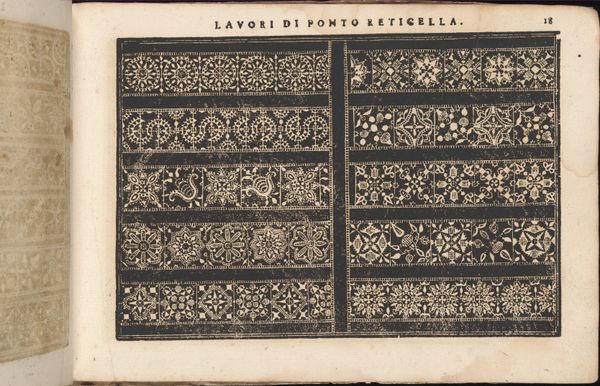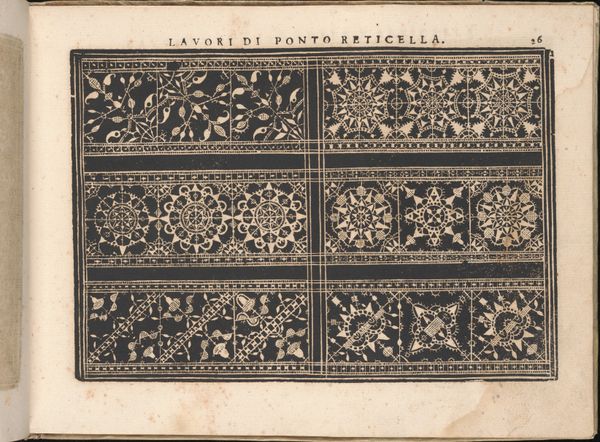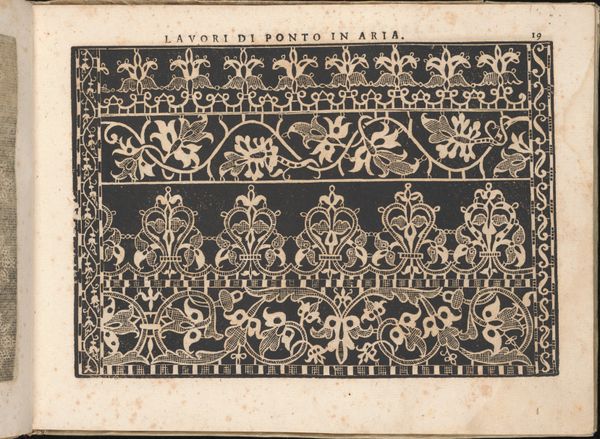
Teatro delle Nobili et Virtuose Donne..., page 22 (recto) 1616
0:00
0:00
drawing, print, paper, ink, engraving
#
drawing
#
toned paper
#
ink paper printed
# print
#
book
#
paper
#
11_renaissance
#
ink
#
geometric
#
engraving
Dimensions: Overall: 7 1/2 x 10 7/16 in. (19 x 26.5 cm)
Copyright: Public Domain
Curator: Immediately striking is the meticulous detail! It almost vibrates with energy. What do you see? Editor: We're looking at a page from "Teatro delle Nobili et Virtuose Donne...", a book dating back to 1616, currently held at the Metropolitan Museum of Art. The artist is Isabella Catanea Parasole. The work combines ink, drawing, and engraving printed on paper, specifically toned paper. It depicts patterns for lace making. Curator: Lace-making patterns presented in a printed book. It suggests an interesting intersection of traditionally gendered labor, design, and early print culture. What can you tell me about the making of the artwork? How do you feel about the artist's contribution? Editor: The engravings would have involved skilled artisans reproducing Parasole's designs. Consider the labor involved – from paper production to the delicate engraving, each stage a specialized craft. The printing press democratized access to these patterns, allowing women to create exquisite lace for personal use and possibly for income generation. It elevated the status of craft but at the same time industrialized design for it, as if industrialisation already was changing craft labour division. Curator: Indeed. This image operates on multiple levels. It is an artwork but is functional, intended for dissemination and reproduction. Editor: Museums are essential spaces that elevate works that otherwise might have been relegated only to a commercial, functional world. Through collecting and exhibitions we shape understanding, don't we? How has this book historically shaped the perception and development of textile design? Curator: I wonder about the intended audience and social impact within its historical context. We see these intricate patterns consumed and interpreted within evolving gender dynamics and class structures. There were rules, sometimes literally named "sumptuary rules" against what sort of fabrics you could purchase, use, wear, etc. Editor: Precisely, influencing notions of taste and artisanal skill across generations. Thank you. Curator: My pleasure. The patterns’ impact on consumption of textiles should not be overlooked!
Comments
No comments
Be the first to comment and join the conversation on the ultimate creative platform.

